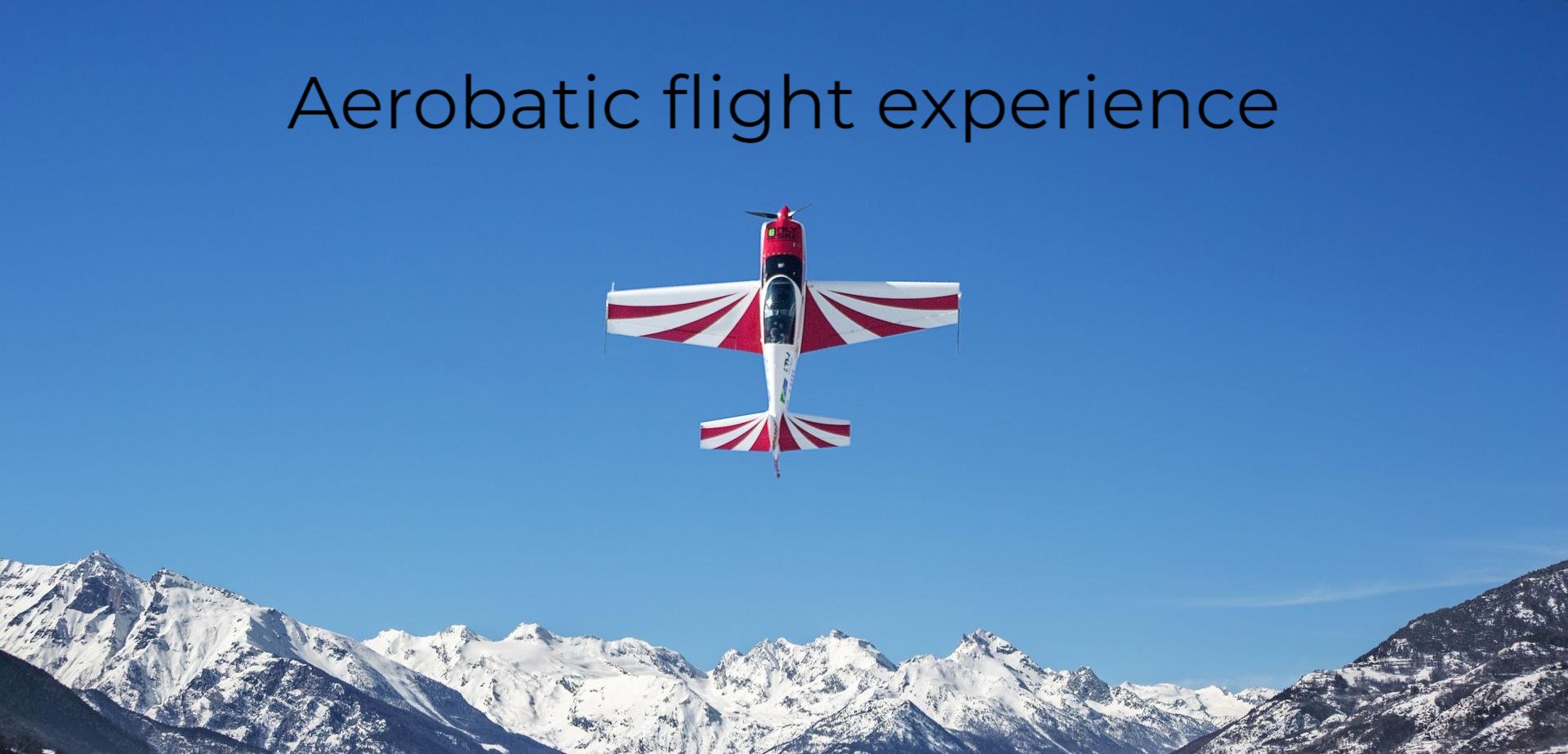
If you’re reading this, you have probably been invited to an aerobatic flight experience. Aren’t you lucky! This is likely to be a once-in-a-lifetime experience, something to be enjoyed and reflected on in years to come.
The aircraft is an Extra 200. It’s an advanced, two seat, high performance, aerobatic aircraft designed by famous aircraft designer Walter Extra. His aeroplanes are used world-wide and flown in aerobatic competitions, displays, and pilon racing (like the Red Bull Air Race).
The number 1 priority is your safety. To this end, you should read the following very carefully and ensure you abide by any guidance given.
Weather
The biggest inhibitor to flying is the weather, and in Britain we’re all aware of how variable this can be. To safely conduct aerobatic manoeuvres the weather needs to be good. This consists of good visibility, no rain, and a high cloud base (or better still no clouds). So whether you get to fly or not could be a last minute decision.
Clothing
Airfields are generally exposed, windy locations, and will often feel a lot colder than you will feel had you been in your garden at home. There is no heater in the aircraft, so wrap up warm. Wear trousers, not a skirt (you’ll see why) nor shorts. Jeans are fine. Wear a long sleeve top ensuring your arms are covered. If it is very cold, you might need a tight-fitting jacket or coat and a beanie (or similar) hat. No scarves or trailing items please.
If you have long hair, you should consider that this could get trapped in the harness if left unrestrained.
Your shoes should be something lightweight, soft, with soft soles – trainers or plimsolls are ideal, boots are not.
If you wear glasses, they must be secure and not come off your head.
Sunglasses – if the day is very sunny, some sunglasses are advisable – they MUST be secure, and not likely to come off when flying.
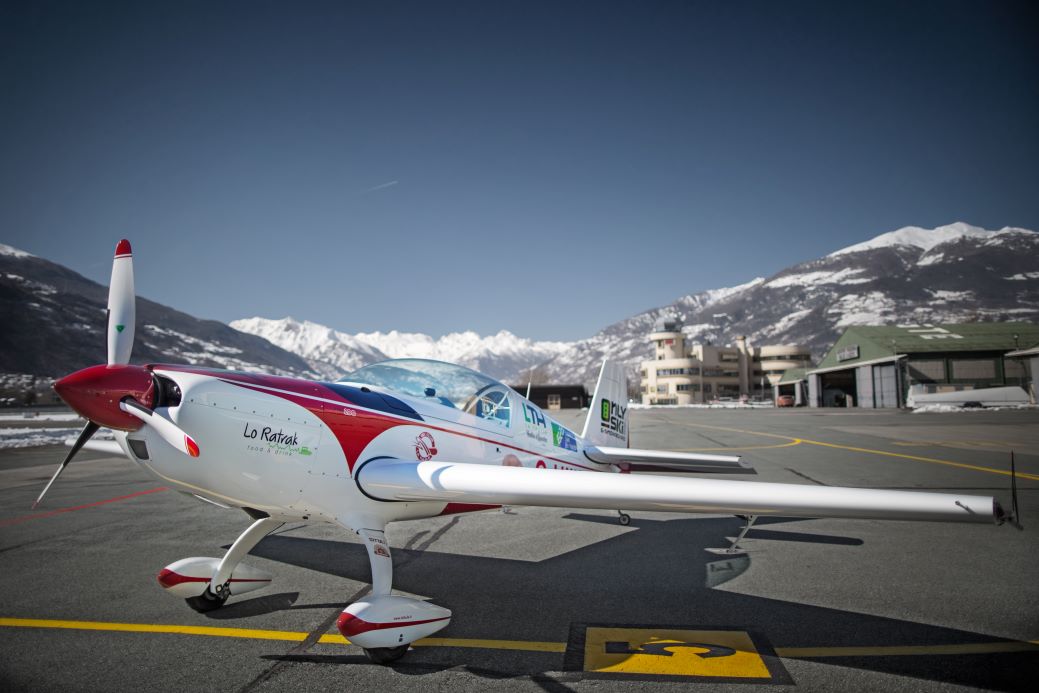
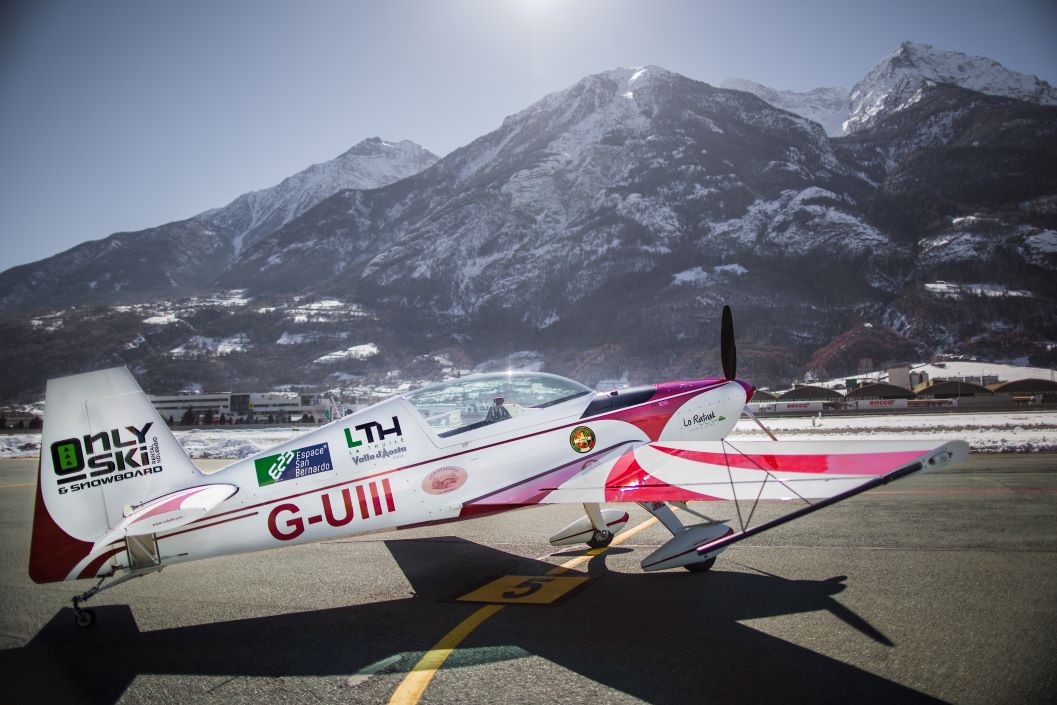
Tandem seating
The aircraft has tandem seating. The passenger sits in the front, the pilot in the rear. The passenger gets a great view out of the front. There are dual controls, so the aircraft can be controlled in the air from both seats. There are two main controls; one is a stick which will be between your legs, and this controls the motion of the aircraft in PITCH and ROLL. In addition, there are two pedals, one for each foot, and these control the YAW.
Whilst the aircraft is in motion you must not touch or restrict the controls. You will be strapped in tightly, so you are secure in the aircraft. If you feel the need to hold onto something you can hold on to the white painted metal structure of the aircraft or the harness. You can rest your feet on the rudder pedals, but don’t try to fight the pilot who will be using them both in flight and on the ground. These pedals are how the aircraft is steered on the ground.
Headset
You will be provided with a headset. This is like a set of headphones, that also has a microphone. This needs to sit snugly on your head, and the microphone needs to be almost touching your lips. If you purse your lips as in giving a kiss, you should be able to touch the microphone. If it is too far away, it won’t work.
The headset will allow you to talk to the pilot. You will also be able to hear conversations on the radio between the pilot and the ground stations such as an air traffic controller. If you hear a radio transmission, immediately stop talking so the pilot can listen. The situational awareness for the pilot is as much about listening to the radio as it is looking out of the aircraft.
On the end of the control stick is a button. This is a 'Push to talk' (PTT) button which transmits the pilot's speech through a VHF radio, such that the pilot can communicate with other stations, such as air-traffic control. Be careful not to press this by accident.
During some aerobatic manoeuvres, you might need to have one hand on your headset in order to keep it from falling off. Bear this in mind, and be ready to hold it on your head.
Other aircraft
If, during the flight, you see other aircraft (we call this traffic), please point it out to the pilot. The chances are that the pilot knows, but two sets of eyes is better than one. In the airspace you will be flying in, there will be no air-traffic control, so collision avoidance is down to keeping a good look-out for other aircraft and avoiding them.
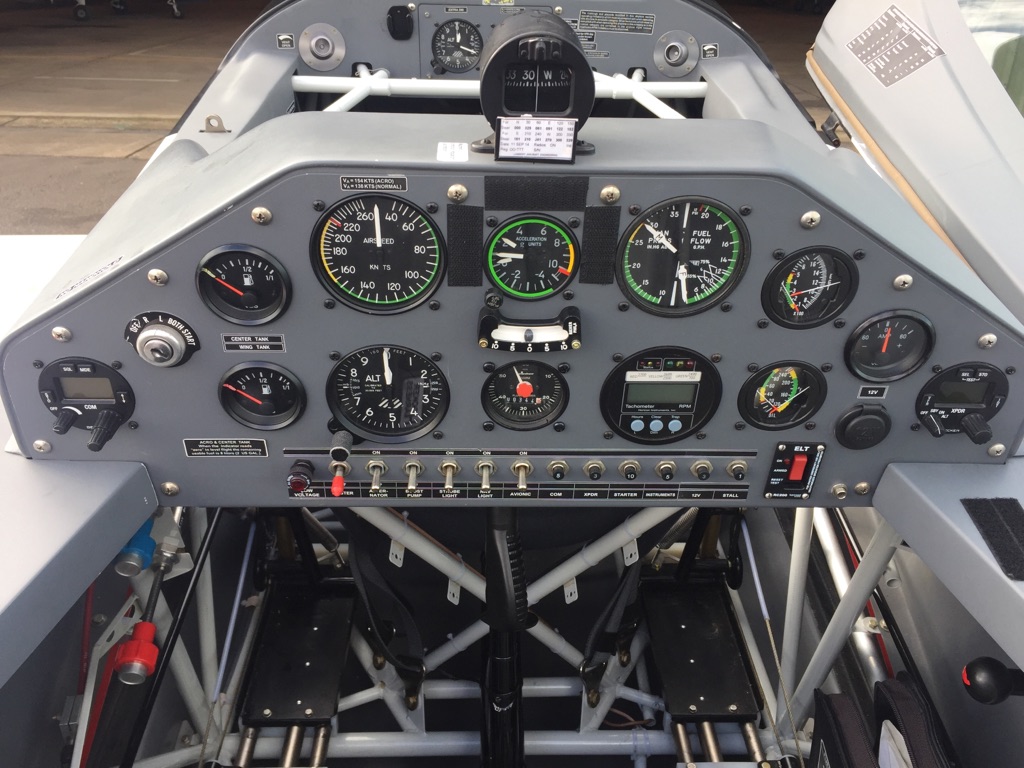
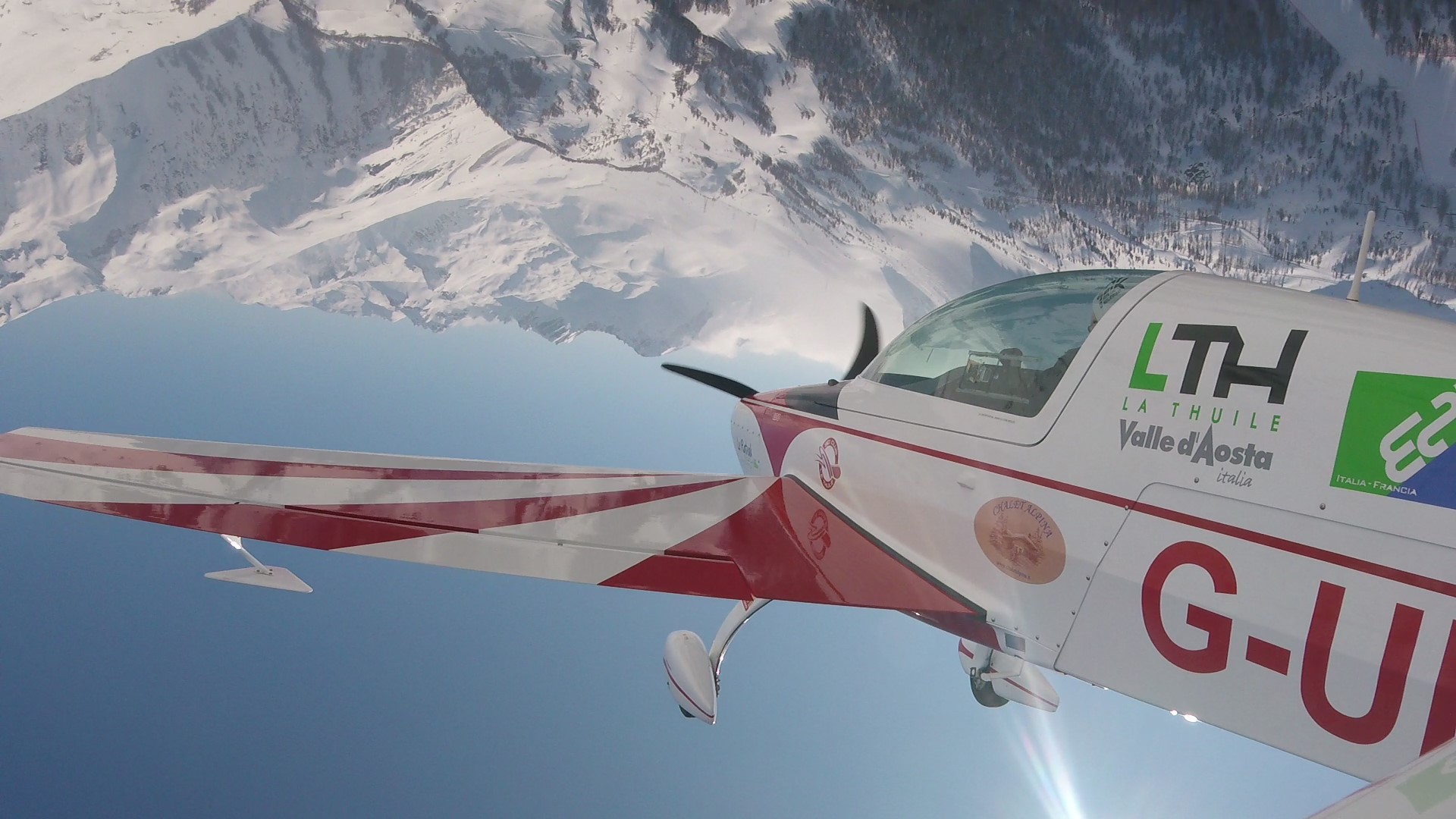
Emergencies
Just like on a commercial aircraft, whilst emergencies are very rare, you need to be aware of what to do, and what might happen. The aircraft has only one engine, and although failures are thankfully extremely rare, the most likely emergency is an engine failure. In such an event, the aircraft becomes a glider, and the pilot will attempt an emergency landing in a field.
If you need to get out of the aircraft (when on the ground), you will need to unbuckle the harness, which is secured by two independent buckles, one closing from the right, and the other from the left. You will be shown this in the pre-flight briefing. The canopy is opened by squeezing the two red triggers together which are on the left-hand side which will allow the canopy to be hinged open. You will see how this works when you get into the aircraft.
The aircraft is equipped with an emergency location beacon. In the event of a crash, this is automatically set off and sends an emergency signal, via satellite, to advise the emergency services. These are now a mandatory safety item on all small aircraft of this type.
Loose articles
In the aircraft community, we talk a lot about ‘loose articles’. These are anything that can be dropped, or come detached, from a pilot or passenger. As the control systems on this aircraft are all exposed, there is a real risk that if something is dropped, or comes detached, that article could get jammed in the controls. Phones have been known to fall from hands and pockets and get jammed in controls. Because of this risk, you will not be allowed to carry any item that could be dropped. You should empty your pockets or ensure that any items are in a zipped or thigh pocket where it cannot be dropped. Loose coins, for example, WILL rattle around and damage the aircraft and can get jammed in control systems, or get lost into the wing, which necessitates dismantling the aircraft (at massive cost). So NO loose articles! You can take a phone or a camera, but it MUST be on a lanyard, and must remain in your hand for the duration of the flight.
Size & weight
There are some size and weight restrictions in this aircraft due to the very confined space, and the difficulty, particularly in getting out of the aircraft after flight. If the passenger is too big, they will also impair the use of the controls. The aircraft also has to comply with a “weight-balance” measurement. The aircraft has a maximum take-off weight which is quite easy to exceed, and the pilot also needs to ensure that the weight being carried is located within limits of the Centre of Gravity of the aircraft.
The maximum height is 185cm (just over 6ft) and 100Kg (220Ib; 15 stone 10lb) fully clothed
You need to have a reasonably good mobility. This means being agile enough to do 5 press-ups, balance on each leg individually, and be able to do 3 squats (both legs) in succession. This is because exiting the aircraft unaided requires a degree of strength and flexibility.
Pre-flight briefing
The pilot will give you a safety briefing and reemphasise the key points. You should ask the pilot any questions you have before you get into the aircraft.
Photos
Feel free to take photos with the aircraft when on the ground.
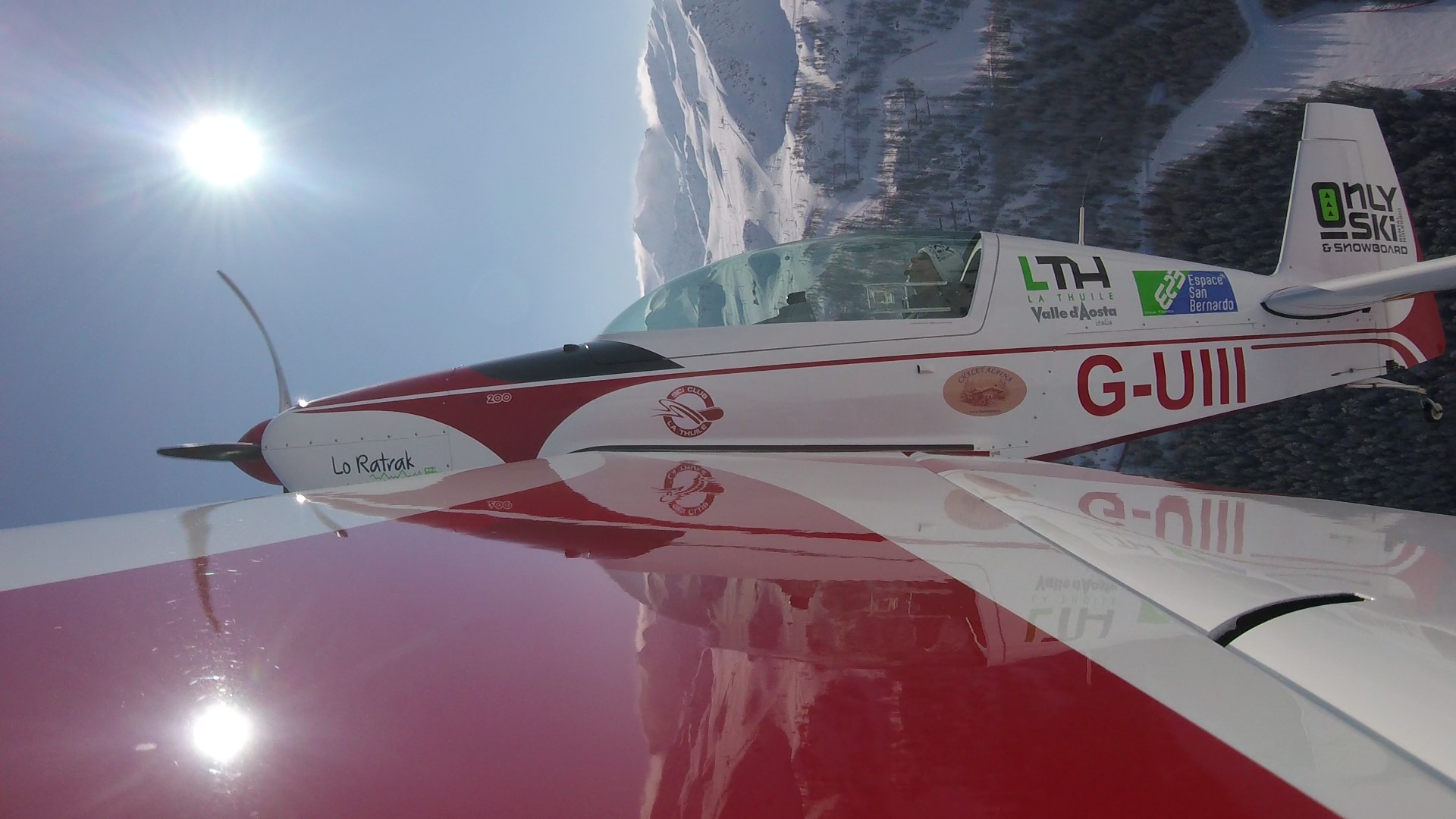
Getting in
The pilot, or an assistant, will help you get into the aircraft. They will guide you. Please listen to them carefully and follow their instructions. Whilst the main structure of the aircraft is immensely strong, but for lightness, there are a lot of other parts that are not. It is very easy to cause damage to the aircraft just by leaning, standing or putting your hand in the wrong place. Once in the seat, allow the pilot, or assistant, to put your safety harness on. Let them do it – the metal buckles can easily be thrown around the cockpit causing damage to the aircraft. The harness is a 7 point harness which has two lap straps, two shoulder straps and a crotch strap. It might feel a little daunting when you see the harness – don’t be perturbed, it is designed to secure the passenger when doing extreme high force manoeuvres where the body can weigh up to a tonne!! Don't worry, you won’t be doing this!
The flight
The flight will typically be up to 15 minutes. For most people this will be enough. The aircraft will take-off from the airfield into a section of clear airspace away from conurbations. All aerobatic manoeuvres involve the aircraft making quick changes in direction, which involve the body experiencing forces not usually experienced everyday. They will be combinations of pitching, rolling and yawing. We usually measure these forces in terms of G (Gee). We experience 1G on the ground due to gravity. In a typical manoeuvre, such as a loop, you will be subject to forces of 3G+. This should be an exhilarating experience, as this is coupled with a unique inverted view of the world.
The flight will start with some gentle manoeuvres, to get you used to the sensation of ‘pulling G’. The pilot will build up the complexity of the manoeuvres depending upon your feedback. You will be doing some of the basic aerobatic manoeuvres, such as a ROLL, a LOOP, a Chandelle, a STEEP TURN, a STALL TURN and maybe a SPIN.
The pilot may then link a series together into a SEQUENCE, including such manoeuvres such as a CUBAN EIGHT.
If you do any manoeuvres that involves the aircraft going up vertically, look out to the left hand side of the aircraft; there is nothing interesting to see looking straight up. When you look out the side of the aeroplane, you will see some structures on the end of wings which are sighting devices. The pilot uses these to comparing the angles made by the sights and the horizon.
If, at any point whilst you are in the aircraft (and yes, including before take-off), you feel unwell, you MUST tell the pilot immediately. This is safety issue. The pilot will stop the aerobatics immediately and give you some time to compose yourself. For sure, you will feel odd during the flight – the G Forces will be something you may never had experienced before. Try and relax and enjoy the sensations. You are strapped in tight and secure so you don’t need to be fearful.
After the flight
When the aircraft comes to a stop and the engine is switched off DO NOT MOVE! DO NOT UNDO YOUR HARNESS! Please allow the pilot, or assistant, to open the canopy and undo your harness. They will then guide you on how to exit the aircraft safely and without damaging the aircraft.
It is usual after the flight to experience euphoria and you might feel unsteady on your feet. The G forces will temporarily upset the balance mechanisms in your inner ear, and the adrenaline will be pumping.
Enjoy it
Most of all, enjoy your flight!!!
Risks and Liability
We can't finish off without talking about the risks. The aircraft and the pilot are licensed and insured to carry a passenger. However, flying in a light aircraft and undertaking aerobatics carries an element of risk. At the extreme these risks can include severe injury and death. These outcomes are thankfully rare, and of course the pilot is not intending for there to be an incident, but there are some risks and not every eventuality can be planned for and all risks eliminated. If you choose to fly, you do so at your own risk.